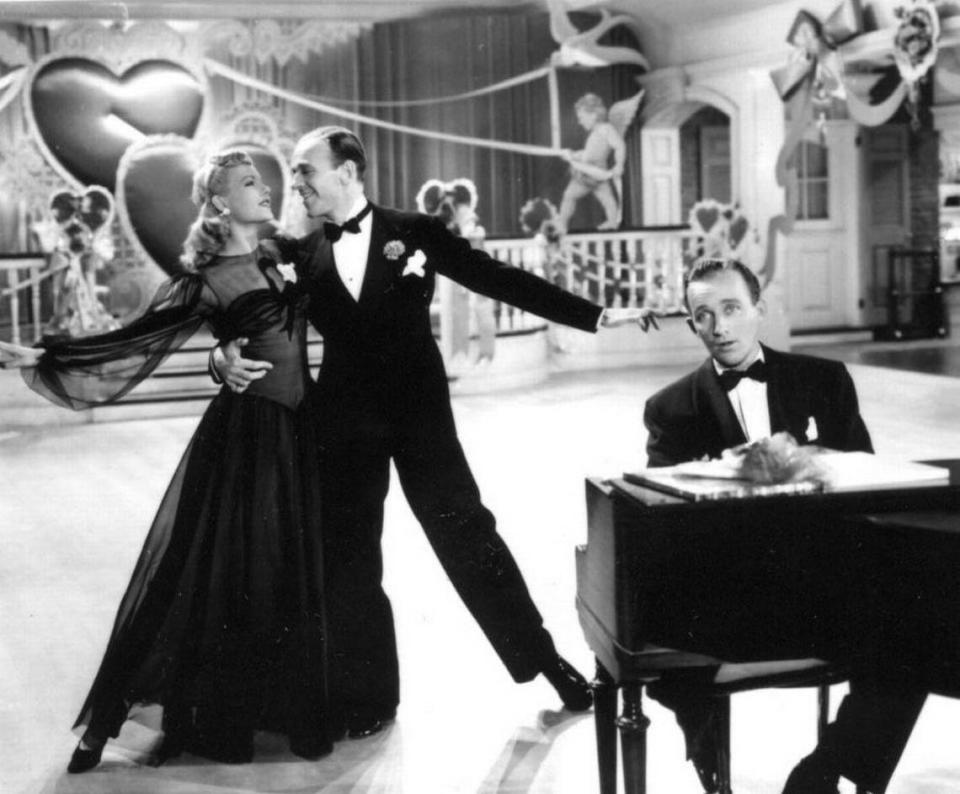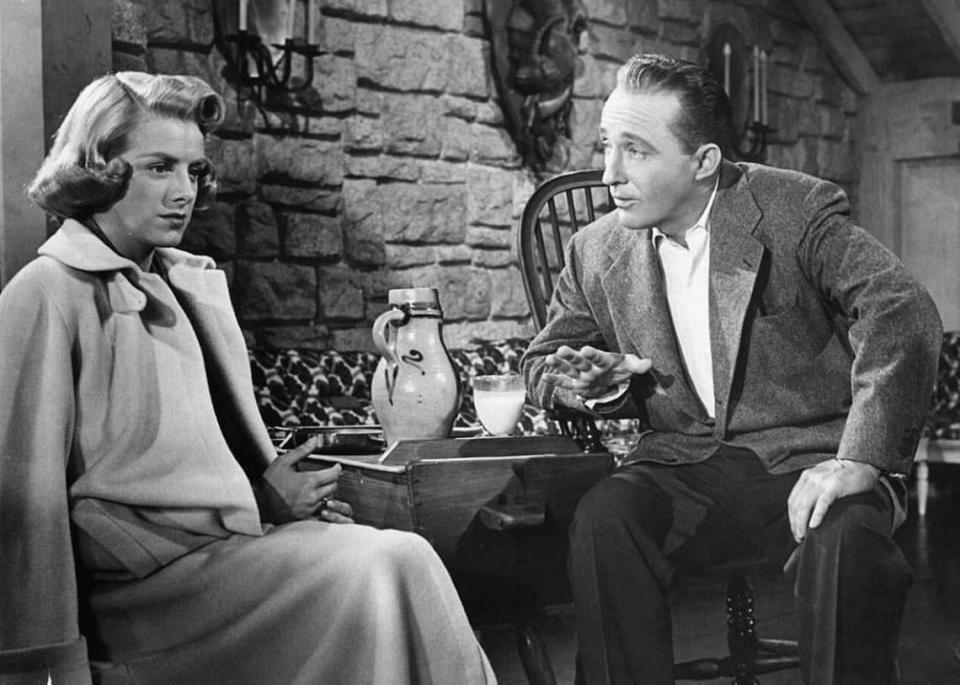‘White Christmas’ is a fine film, but this other Bing Crosby holiday classic is better | Opinion
- Oops!Something went wrong.Please try again later.
- Oops!Something went wrong.Please try again later.
- Oops!Something went wrong.Please try again later.
- Oops!Something went wrong.Please try again later.
Many of you have or will soon watch “White Christmas” as part of your annual celebration.
There’s nothing wrong with that. It’s a delight. It’s just that there’s a superior Bing Crosby Christmas movie.
“Holiday Inn” has better songs, a better plot, better acting and better jokes. It also has an offensive scene and song that bears advance warning and will make the movie too offensive to some. More on that later.
Where “White Christmas” goes over the top, “Holiday Inn” avoids overkill. The earlier film, from 1942, ironically originated the all-time best selling song “White Christmas.” The movie of the same name is a bit of a knockoff.
I don’t mean to disparage “White Christmas.” We watch it pretty much every year, too. It’s just that because of repeated cable TV airings on AMC and its sister networks — five in the week preceding Christmas and on the holiday itself — it has overwhelmed “Holiday Inn,” which deserves a similar place in the spotlight.
The movies are roughly similar and, fun fact, the “White Christmas” set from 1954 was adapted from that of the older film. In “Holiday Inn,” Crosby plays a burned-out entertainer who’s ready to retire to a farm and marry his stage partner. But she wants to keep performing, and the third member of the team, played by Fred Astaire in a mildly wicked turn, steals her away.

Crosby’s character, Jim Hardy, soon finds the farm life isn’t the idyllic laziness he was hoping for, so he hatches a plot to create a dinner club open only on holidays. A new love interest enters, but Astaire’s character, Ted Hanover, returns to cause trouble again. Hilarity ensues over a year’s worth of days “marked in red” on the calendar — Valentine’s Day, George Washington’s birthday and so forth.
You’ll have to hunt “Holiday Inn” down a little. It’s available for Amazon Prime subscribers and for rental on several other streaming services. But it’s not in rotation on TV like its successor. Part of the reason may be a painfully offensive blackface scene. Crosby’s character turns a number for Abraham Lincoln’s birthday featuring himself and Linda Mason, played by Marjorie Reynolds, into a blackface bit to hide Linda from the scheming Astaire character.
Art should be considered in its original context. It’s noteworthy that Irving Berlin’s inclusion of a racial slur in the song for the scene, “Abraham,” drew protest from Black newspapers, while the blackface scene didn’t, perhaps because it was still a common technique, according to Crosby biographer Gary Giddins. Berlin apologized for the racist term and cut it from future sheet music.
Racism in art should not be casually dismissed, of course. The scene is ugly today, but it’s an isolated section that can be skipped with fast-forward. The rest of the film is a collection of charming moments. Astaire’s villainry is gentle — this is an Irving Berlin holiday film, after all — but he and his scheming manager are just evil enough (and just clumsy enough) to drive the plot.
Every one of the musical numbers, themed to different holidays, is charming. Crosby is in fine form, teaching Reynolds to sing “White Christmas.” Later, his character gets a little devious himself, sabotaging Astaire’s efforts to kiss Reynolds during a Washington’s birthday dance. (An aside: You’ll yearn for the days when we celebrated America’s greatest and most important presidents individually, not with the collectivist Presidents Day, the participation trophy of American holidays.)
Astaire brings star power to “Holiday Inn” that Danny Kaye, as great as he is in “White Christmas,” can’t match. For the Independence Day performance, Astaire cooks up an incredible firecracker-themed dance. The perfectionist did about 50 takes to get the scene the way he wanted, Giddins wrote.

And you’ll find Crosby, 12 years younger here than in “White Christmas,” wooing Reynolds a little more believable than his courtship of Rosemary Clooney in the later film, when the crooner was past 50.
We’ve gotten a little nutty about Christmas movies, thanks to the insatiable appetite of cable TV. “A Christmas Story” is fun and well-executed, but it’s a second-tier film elevated by marathon airings. “National Lampoon’s Christmas Vacation” is hilarious, but if you’re wearing a T-shirt showing Randy Quaid’s character emptying a septic tank, you’ve gone too far.
And don’t even get me started about the ridiculous notion that “Die Hard” is a Christmas movie.
The holidays are about comfort, of course, so watch what you like, as often as you like.
I’ll chuckle, too, every time Kaye grabs his once-wounded arm to manipulate Crosby in “White Christmas.” But I’ll do so knowing that a decade earlier, there was a sharper, funnier film — and you should, too.

